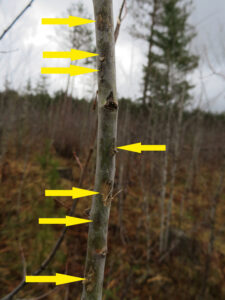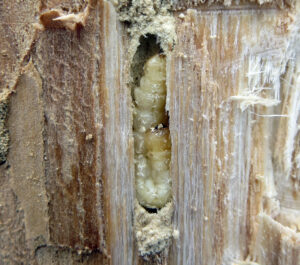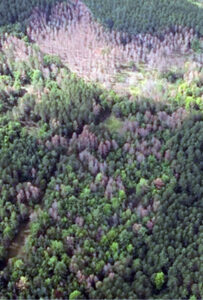
A young aspen shows signs of severe impact from hail. Arrows indicate each point of impact. / Photo Credit: Wisconsin DNR
By Linda Williams, DNR Forest Health Specialist, Woodruff
Linda.Williams@wisconsin.gov, 920-360-0665
Several high-impact storms across the state this summer have pummeled trees with hail. The photos accompanying this article show the kind of damage hail can bring to forests.
The initial damage following a significant hailstorm can immediately appear severe. But give it a month or two, and the damage can look even more pronounced.
Pines in particular will start to turn varying levels of brown, depending on the amount of damage they sustained. Damage to the branches and twigs is not limited to just the spot where the hail hit. As the summer goes on, damaged areas of bark that were cracked by the hail impact will often split open further and allow more drying and additional separation of the bark from the wood, which kills that area of the branch.
Continue reading “Hail Damage Can Cause Dieback, Whole-Tree Mortality”


